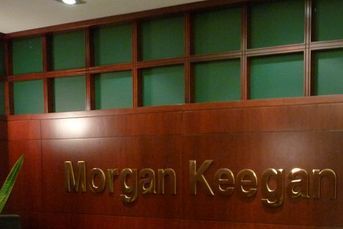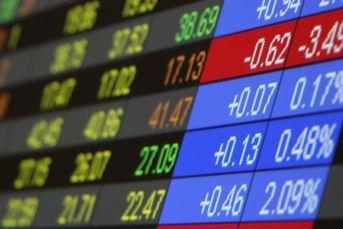Vix bets reflect optimism over Europe, equities

Traders are placing more bets than any time since 2009 that the CBOE's Volatility Index will fall, a sign they expect concern about Europe's credit crisis to recede and the Standard & Poor's 500 Index to rally.
Traders are placing more bets than any time since 2009 that the Chicago Board Options Exchange Volatility Index will fall, a sign they expect concern about Europe’s credit crisis to recede and the Standard & Poor’s 500 Index to rally.
There are 101 puts to sell the VIX for every 100 calls, according to data compiled by Bloomberg. That’s up from 70 on Sept. 22. Yesterday’s largest trade was for November 25 puts, which pay if futures on the VIX, which derives its value from S&P 500 options, fall 25 percent through the end of next month. The index fell below 30 today for the first time since Aug. 5, before the U.S. lost its top credit rating from S&P.
Pledges by German Chancellor Angela Merkel and French President Nicolas Sarkozy to do “everything necessary” to ensure European banks have enough capital are helping build confidence in equity markets. Increased speculation the VIX will fall follows a 9.2 percent retreat in the gauge this week through yesterday, and a 3.5 percent gain in the S&P 500.
“They’re bets on a return to some semblance of normality,” according to Jeremy Wien, a VIX options trader at Peak6 Investments LP, which oversees about $1 billion in Chicago. “Things were really looking dismal into last week, and as the market turned around, so did sentiment. We’re seeing lots of VIX put buying, and buyers in much bigger size.”
Biggest Rally
The last time there were this many VIX puts in relation to calls was January 2009, two months before the S&P 500 began the biggest rally in seven decades. The gauge of 30-day S&P 500 options has stayed above 30 since Aug. 4, compared with its 21- year average of 20.48. It retreated 8.8 percent to 29.96 as of 1:10 p.m. in New York, dropping for a seventh day straight for the longest losing streak since March. In Europe, the VStoxx Index, which measures the cost of Euro Stoxx 50 Index options, fell 6.3 percent to 35.77 today, its lowest level since Aug. 31.
The S&P 500 plunged 19 percent between April 29 and Oct. 3, with losses accelerating after July 22 amid speculation the U.S. government would lose its top credit rating. S&P cut the ranking to AA+ from AAA on Aug. 5.
The stock index then rose 8.7 percent through Oct. 10, the most over five days since the bull market began in March 2009, on optimism European leaders will take action to solve the region’s debt crisis. Merkel and Sarkozy gave themselves three weeks on Oct. 9 to devise a plan to recapitalize banks, get Greece on the right track and fix Europe’s economic governance.
“Investors don’t want to bet as hard against the market because the market pulled back quite severely,” Lawrence Creatura, a Rochester, New York-based fund manager at Federated Investors Inc., said in a telephone interview yesterday. The firm oversees about $350 billion. “Although we have our challenges, both domestically and globally, the sky is not exactly falling just yet.”
Fear Barometer
Another gauge of concern among options investors fell to a two-year low as investors pay more for contracts that gain in value when equities rally. The Credit Suisse Fear Barometer, a gauge of prices to sell three-month S&P 500 calls while buying puts, has tumbled to 19.65. It slipped to 17.54 on Oct. 3, the lowest level since October 2009.
“People looking at the VIX would have missed the message that sentiment had turned,” said Mandy Xu, an equity derivatives strategist at Credit Suisse Group AG in New York. “As the market sold off going into the end of September and the VIX surged higher, investors were actually selling out of their put protection and positioning for a rally.”
In yesterday’s largest VIX options trade, an investor bought a block of 55,550 November 25 puts for 40 cents each, according to a report from Trade Alert LLC, a New York-based provider of options-market data and analytics. That’s a bet the November future will settle below 24.60 before Nov. 16. It accounted for 9.4 percent of the day’s trading in VIX options.
Less Volatility
“People are increasingly willing to sell the upside in VIX and buy the downside,” Michael Khouw, director of U.S. equity derivatives trading at Cantor Fitzgerald LP, said yesterday in a telephone interview from San Francisco. “As long as we can hold off on a huge bomb going off, you’re going to see lower volatility in the indices.”
VIX futures indicate options will remain elevated into next year. Futures for every month through May were priced at 32.05, which is 56 percent above the gauge’s 21-year average, or higher yesterday, according to data compiled by Bloomberg.
The VIX will stay high until European leaders announce concrete steps to solve the sovereign debt crisis, Andrew Wilkinson, chief economic strategist at New York-based Miller Tabak & Co., said in a telephone interview yesterday.
‘People Saying Nothing’
“Merkel and Sarkozy came out over the weekend and said something, but they didn’t actually say anything, and that has been the problem for 18 months,” he said. “The rally was built upon an edifice of people saying nothing.”
When the S&P 500 lost 57 percent from October 2007 to March 2009, the VIX tripled. The options indicator rose to a record close of 80.86 in November 2008, two months after Lehman Brothers Holdings Inc. filed for bankruptcy, and closed above 30 every day between Sept. 15, 2008, and May 18, 2009.
This year, the highest VIX close was 48 on Aug. 8, the first trading session after S&P cut the U.S. government’s credit rating. The index has exceeded 30 since Aug. 4.
The S&P 500 is rebounding from an 18 percent drop between July 22 and Oct. 3 that brought it within 1 percent of a bear market, or 20 percent slump from its April 29 peak. During the past week, the fastest growing VIX bets were November 25 puts and November 26 puts, with open interest climbing by 30,595 contracts and 19,963 contracts, respectively, according to data compiled by Bloomberg.
“We’ve seen heightened interest” in puts betting the VIX will fall, Dominic Salvino, a specialist on the CBOE floor for Group One Trading, the primary market maker for options on the index, said in an e-mail yesterday. “People are starting to position for the possibility of a return to normalcy.”
–Bloomberg News–
Learn more about reprints and licensing for this article.







